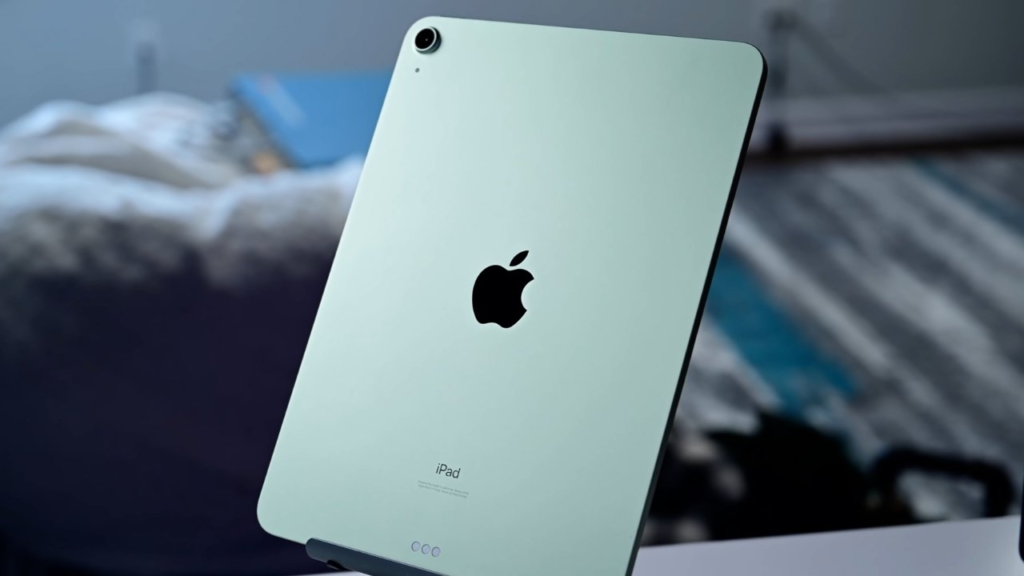The iPad Air (4th generation) blurs the line between mid-range and premium, with head-turning performance, a sleeker look, and a user experience that is hard to tell apart from an iPad Pro. Not only packed with the A14 Bionic chip, sleek aesthetics, and demanding display features, the iPad Air 4 redefines what a mid-level iPad can be.
Please follow us on Facebook and Twitter.
Redesigned with a Modern Aesthetic
And the 4th generation iPad Air, with its sleek, flat, edge design is a direct copy of the 2018 iPad Pro and Apple’s 2020 rework of design across its product line. The iPad Air has five dazzling finishes: Silver, Space Gray, Rose Gold, Green, and Sky Blue. At only 1 pound (458 grams), the watch is amazingly lightweight and portable at 9.74 inches tall, 7.02 inches wide, and 0.24 inches thick it’s stylish.
Performance: A14 Bionic at its Core
The iPad Air 4 has all the speed you could want with its A14 Bionic chip and picks up where the 2018 iPad Pro left off by even beating its own A12Z chip in terms of overall performance. Geekbench 6 benchmarks show its prowess, scoring 2084 for single core, 5008 for multi-core, and 16376 for metal (GPU intensive) shows. Despite the difference in RAM from 4GB on the iPad Air 4 to 6GB on the iPad Pro, it does not pose any problems with most everyday tasks, making it a powerhouse for both casual users and gamers alike.

Display Brilliance with a Few Compromises
The iPad Air 4 utilizes a 10.9” Liquid Retina display with 2360 x 1640 resolution, for bright colors and True Tone. While it has a P3 wide color gamut and 500 nits, it does not have ProMotion technology, which means it has a refresh rate of only 60Hz. Users who are unacquainted with 120Hz displays may not recognise the removal, but comparing the scrolling of the two side by side, reveals the iPad Pro’s to be smoother.
Touch ID and USB-C Convenience
The Home button is gone, and the iPad Air 4 swapped it out for a fingerprint scanner bolted to the Sleep/Wake button. And while Face ID is not available, the company’s implementation of Touch ID is quick and responsive. This model also runs on USB-C, allowing for faster charging as well as easy future connection to 4K monitors.
iPad Air 4 Camera Upgrades for Casual Use
Now on the rear camera is a 12MP sensor with an f/1.8 aperture, enabling better low-light pictures and videography in 4K that shoots at 24, 30, and 60 fps. The increased camera is not intended for serious photographers, although it is more than capable of day-to-day use (for recording unexpected things or for video calls).
No Headphone Jack, but Better Audio Experience
Some users will probably want to be disappointed when there is no headphone jack, needing either Bluetooth or USB-C headphones. The stereo speakers are ok, and decent, but audiophiles could probably find the sound to be tinny at higher volumes. The speakers also output clearly audible audio, especially on moderate volume.

iPad Air 4 Gaming and Accessories
The iPad Air 4 packs an A14 Bionic chip, which is smooth in handling graphics games both with and without controllers such as PlayStation DualShock, and Xbox Wireless. It also works with the Magic Keyboard and the Apple Pencil 2nd generation (of course, it works with iPad Pro too). And by opening these new creative and productivity avenues, these accessories make the amazing versatility of the iPad Air even better.
Storage and Pricing Considerations
The iPad Air 4 offers two storage options: 64GB and 256GB. It is not the most generous of storage capacities (64GB feels woefully thin for 2024) but if you want to step up to 256GB, that’ll set you back $150, which could eat into the budget for some. The iPad Air 4, priced $100 above the model it replaces, but $200 below the iPad Pro, strikes a price point between affordability and performance.
iPad Air 4 Final Thoughts
For most users, the iPad Air 4 is the go-to choice, it will give you near Pro level features in a more affordable package. While still probably more up to professional tasks like higher RAM and processing power, the iPad Air 4 is perfect for everyday tasks, gaming, and light creative work, too. If you are looking to upgrade to an iPad, its modern design, robust performance and its support for some premium accessories makes this a great option.





